General Surgery Residency
Message from our Director Heading link
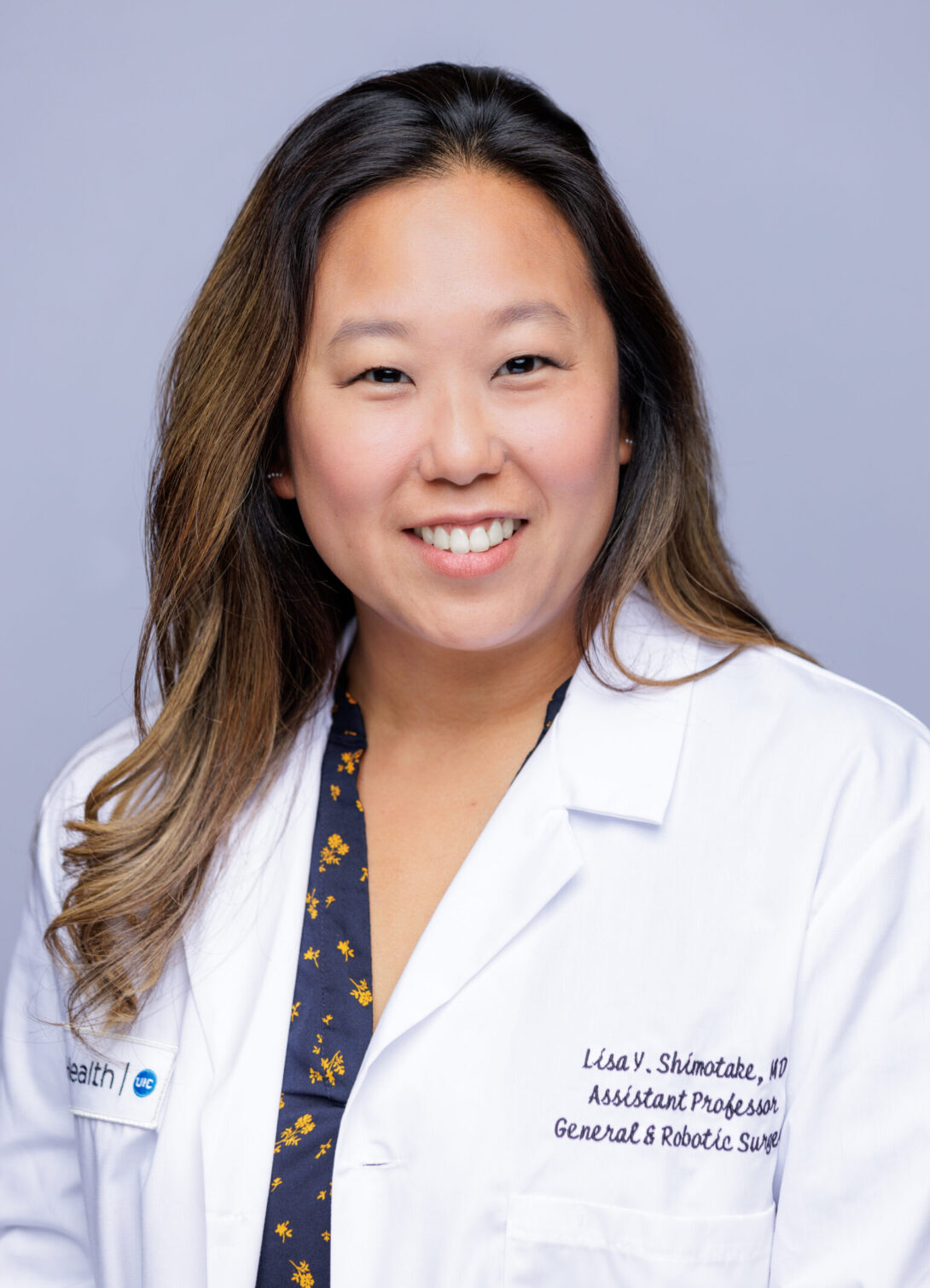
Director – General Surgery Residency
University of Illinois Chicago
It is my pleasure to welcome you to the General Surgery Residency Program at The University of Illinois at Chicago. Our program offers a diverse training environment, with rotations in the university and community settings. The goal of the University of Illinois General Surgery Residency program is to fully train physicians to become competent and skilled surgeons capable of the independent practice of general surgery with the highest ethical and professional standards.
We aim to produce independent surgeons in a supportive environment that offers increasing levels of autonomy. Residents will benefit from training at several institutions including, University of Illinois Hospital, John H. Stroger Jr. Hospital, Jesse Brown VA Medical Center, Advocate Illinois Masonic Medical Center, Advocate Christ Medical Center, St. Francis Hospital, OSF Little Company of Mary Hospital, and the University of Chicago Medical Center.
Our applicants can choose between clinical and academic tracks with funded research. Numerous research opportunities, including basic science, translational, and outcomes research, are available for all residents across the participating institutions.
Our didactic program consists of weekly lectures based on the SCORE curriculum, M&M conferences, and monthly simulation sessions. Our state-of the-art Surgical Education Laboratory, Surgical Innovation Training Laboratory, provides opportunities for dry and wet robotic/laparoscopic training. Through our comprehensive educational conferences, simulation resources, and commitment to surgical education, residents will be uniquely prepared for successful careers in modern surgery.
Most of our residents go on to fellowships after training. Our graduates have been matched in the full gamut of surgical specialties. Our alumni are successful in both private practice and academic surgery, carrying on the long tradition of surgical excellence at the University of Illinois at Chicago. If we can provide any additional information about our general surgical training program, please feel free to contact us. I look forward to hearing from you.
Application Process Heading link
At the University of Illinois at Chicago, we participate in the Electronic Residency Application Service (ERAS). Prospective general surgery residents wishing to apply will need to submit their application documents electronically via the ERAS website. Applications submitted directly to the department will not be accepted. The program is listed under two ERAS tracks : 1150440C0 (categorical) and 1150440P1 (preliminary).
Foreign prospective general surgery residents: At this time, the surgical residency program can only consider applicants with the appropriate J-1 visa sponsored through ECFMG.
We are working hard to ensure that you will have an informative, interactive and enjoyable time with us learning about our program. Our interview season will be structured a differently this year. We will have four interview days – three will be held in person and one will be held virtual. This includes interviews for categorical and preliminary positions.
Enrollment Criteria
Our program is approved for 7 categorical positions and 9 preliminary first year positions. Our categorical residents will be distinguished by track – academic or clinical. Applicants must be within three years of medical school graduation. The following documents are REQUIRED for review:
- Three (3) letters of recommendation
- Dean’s letter (MSPE)
- Medical School Transcripts
- Personal Statement
- United States Medical Licensing Examination (USMLE) Scores
- ECFMG Certificate* if applicable
A completed application must be available to us no later than December 1st for the following academic year. Submitting your application does not guarantee an interview. With the number of applications we receive, we do not have the ability to contact all interested students. After review of applications, prospective residents will be receiving an email through the ERAS system if selected for interview.
The program does not offer positions prior to the Match.
Links Heading link
For more information on the residency program, please contact: Heading link
Nancy Martinez
Phone:
Email:
Why Did I Choose UIC? Heading link
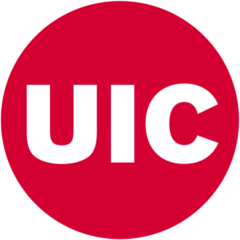
“I knew in medical school that I wanted to pursue a career in either minimally invasive surgery or transplant. While initially torn between the two, I had the opportunity to do an away rotation at the institution that performed the first robotic donor nephrectomy, UIC. During my time there I was treated like a vital member of the team, and appreciated the camaraderie of the residents and attending. I recognized the vast scope minimally invasive surgery had to offer, and wanted to be part of an institution which pushed the boundaries of surgery.”
| PGY3
Hospital and Training Affiliates Heading link
At the University of Illinois Hospital, we are privileged to work with top medical facilities to help develop our residents in different areas due to the diverse atmosphere provided.
Our program draws on the unique strengths of our integrated hospitals and their teaching staff at these various institutions to help challenge our residents to achieve their full potential.
-
UI Health
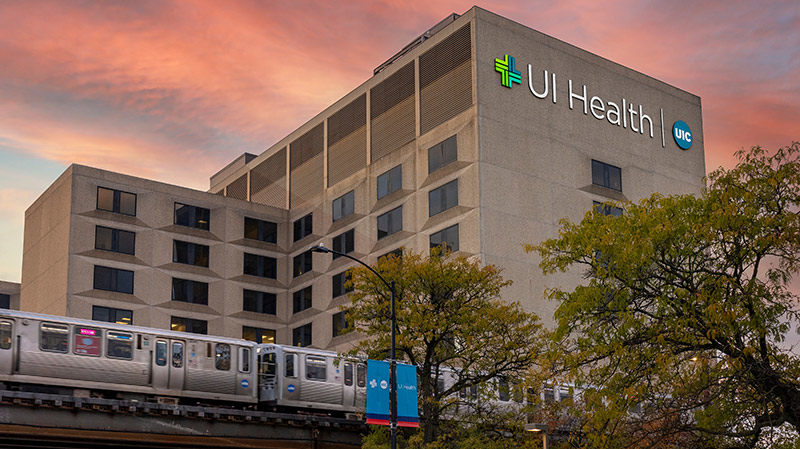
At the University of Illinois Hospital, the residents are exposed to a robust general surgery service. In addition to cutting edge minimally invasive robotic techniques that are not offered at our affiliated institutions, we offer a diverse surgical experience in vascular surgery, surgical oncology and colon and rectal surgery at the University.
Our residency program offers one of the top comprehensive transplant programs in the Chicagoland area. This is one of the few programs in the country that offers a minimally invasive transplant experience. We have a dedicated separate Children’s Hospital that provides a full range of pediatric surgical services. Residents are exposed to an underrepresented minority population requiring a higher number of public aid services.
UI Health
1740 W. Taylor St. Chicago, IL 60612 -
John H. Stroger Hospital
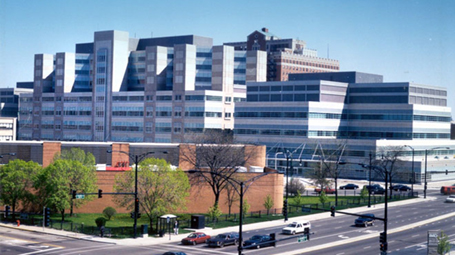
John H. Stroger Hospital is part of the Cook County Bureau of Health Services. Stroger Hospital has over 450 beds and nearly 100 outpatient clinics, and serves as the primary public provider of comprehensive medical services for the people of metropolitan Chicago. In 2002, they opened a new state-of the-art hospital facility. Residents and attending physicians work closely together to meet the needs of the multi-ethnic population of Chicago.
Residents rotate on the colon and rectal surgical service and achieve endoscopy experience at this hospital site.
John H. Stroger Hospital of Cook County
1725 W. Harrison St. Chicago, IL 60612 -
Jesse Brown VA Medical Center
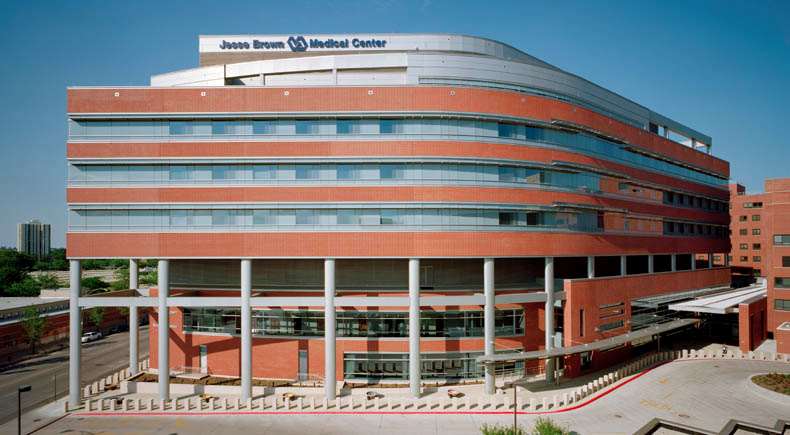
Jesse Brown VA Medical Center is a 200-bed comprehensive healthcare facility serving veterans in the Chicagoland area. This residency program underscores the hospital’s commitment to excellence in medical education and dedication delivering exceptional care to veterans in primary care, mental health and a wide array of specialties.
Jesse Brown VA Medical Center
820 S. Damen Avenue, Chicago, IL 60612 -
Advocate Illinois Masonic Medical Center
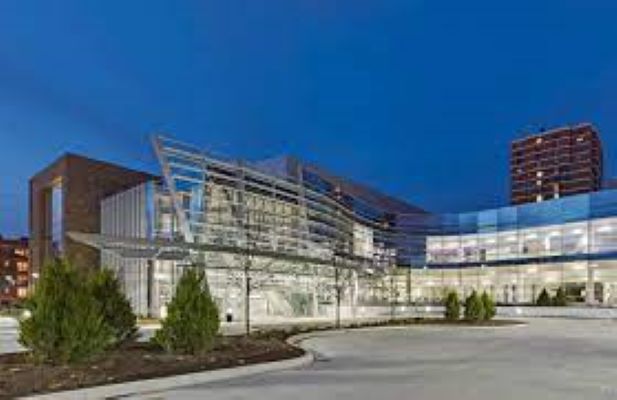
Advocate Illinois Masonic Medical Center is a 551-bed teaching and referral center located on Chicago’s north side. It is part of Advocate Health Care, one of the top health care systems in the country and the largest fully integrated health care delivery system in Illinois. Illinois Masonic Medical Center provides care for North Side Chicago multiethnic, multicultural, socially diversified population. Faculty is composed of outstanding clinicians with academic background skills and expertise covers all disciplines of surgery and many fields of scientific investigation.
Advocate Illinois Masonic Medical Center
836 W. Wellington Ave. Chicago, IL 60657 -
Advocate Christ Medical Center
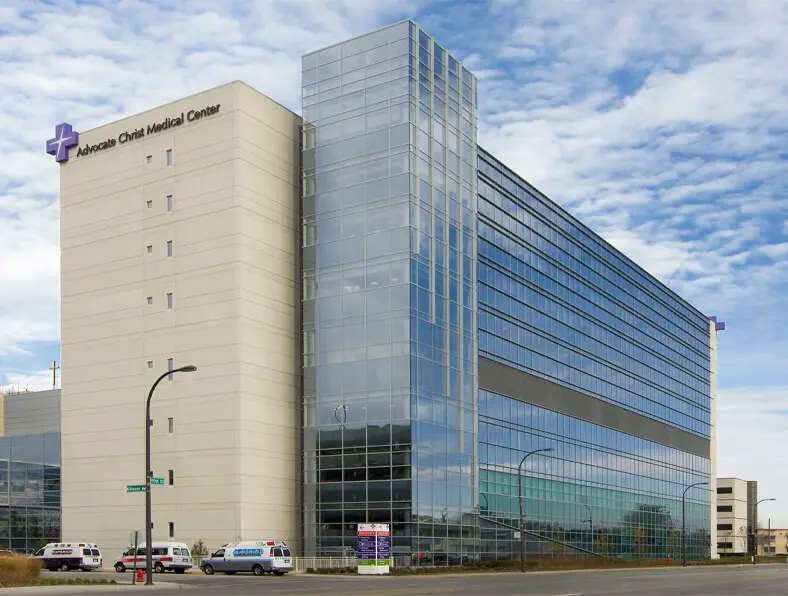
Advocate Christ Medical Center, in Oak Lawn, Illinois, stands as a renowned healthcare institution offering advanced medical care to patients across the Chicagoland region. As a leading academic medical center, it provides comprehensive services ranging from primary care to highly specialized treatments.
At this 788-bed Level 1 trauma center, surgical residents get experience in trauma and acute care, vascular surgery, pediatric surgery, and thoracic surgery.
Advocate Christ Medical Center
4440 W. 95th Street, Oak Lawn IL 60453 -
AMITA Health Saint Francis Hospital
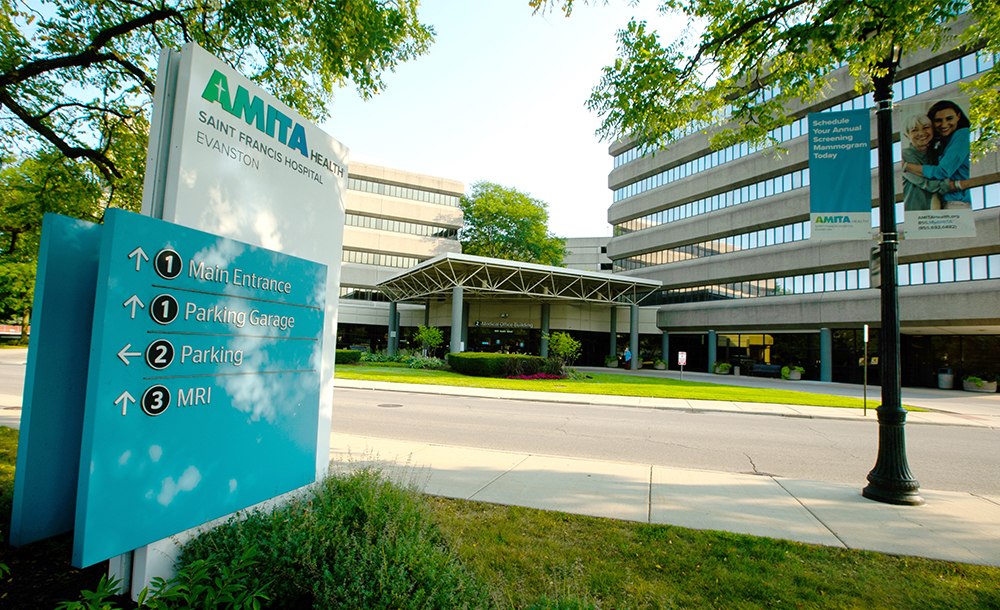
AMITA Health Saint Francis Hospital , founded over 100 years ago, is a 270 bed teaching institution serving patients from Chicago’s far north side and northern suburbs. There are more than 400 physicians on staff providing care for a diverse patient population that includes 78,000 outpatient visits, 9,000 admissions, 8,600 operative cases and 34,000 ER visits per year. It is also a chest pain and primary stroke center and has been designated a magnet hospital.
AMITA Health Saint Francis Hospital
355 Ridge Ave. Evanston, IL 60202 -
OSF Little Company of Mary Hospital
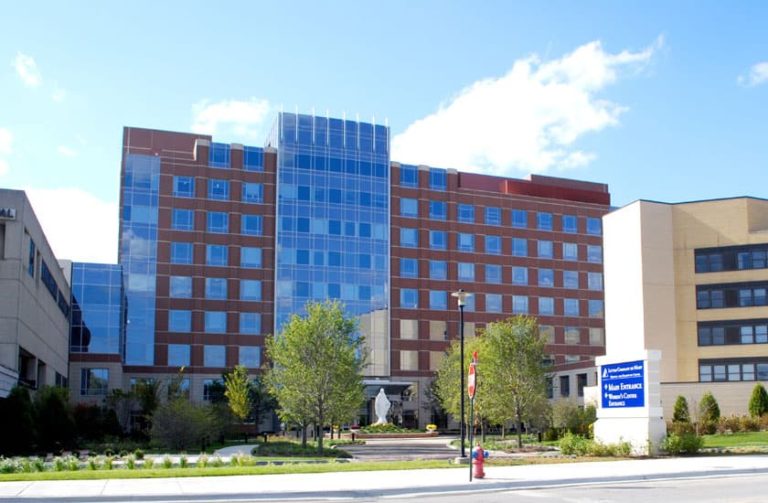
OSF Little Company of Mary Hospital is a community based hospital 298-bed health care facility established in 1930. This state-of-the-art hospital provides care and vital resources for more than 11,600 inpatient visits, over 253,000 outpatient visits and nearly 50,000 emergency department visits annually. The geographic service area is distinct from UIH offering a variety of surgical cases, which provide a multitude of opportunities for our residents.
Residents are able to enhance their clinical skills in a wide variety of areas ranging from comprehensive history to evidence-based problem solving.
OSF Little Company of Mary Hospital
2800 W. 95th St. Evergreen Park, IL 60805 -
University of Chicago Medical Center
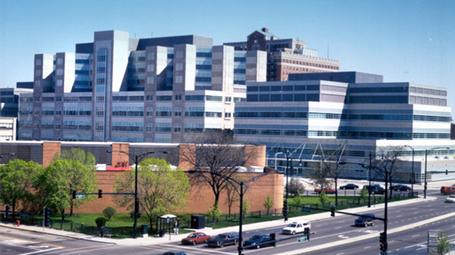
University of Chicago Medical Center was founded in 1927 and has thrived as an academic and community health system. This 811-bed hospital is located on the south side of Chicago and sees patients from both Chicagoland and Indiana.
Residents rotating here will have the opportunity to take part in a high volume and busy level 1 trauma service that reopened its doors due to the need in the Chicagoland area